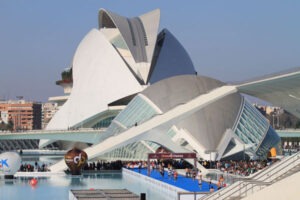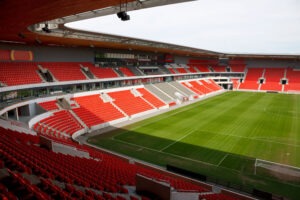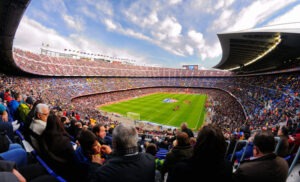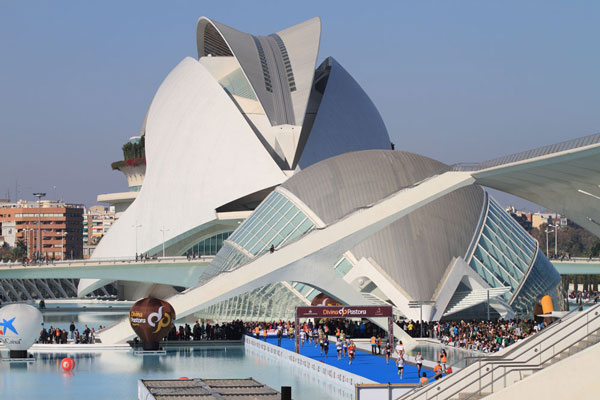The Typology of Sporting Venues: Stadiums and Arenas
 Sports activities have for a long time fascinated the imagination and hearts of people around the world. Whether or not it’s the excitement of a soccer match, the grace of figure skating, or the intensity of a basketball game, the spectacle of sports brings communities together and ignites a sense of camaraderie. At the center of this global passion lie the sporting venues, the grand stages where athletes showcase their skills and fans become part of something greater. Within this realm, two iconic architectural typologies stand out: stadiums and arenas. Each with its unique characteristics, these structures shape the experience of sports, leaving an indelible mark on the collective memory of fans.
Sports activities have for a long time fascinated the imagination and hearts of people around the world. Whether or not it’s the excitement of a soccer match, the grace of figure skating, or the intensity of a basketball game, the spectacle of sports brings communities together and ignites a sense of camaraderie. At the center of this global passion lie the sporting venues, the grand stages where athletes showcase their skills and fans become part of something greater. Within this realm, two iconic architectural typologies stand out: stadiums and arenas. Each with its unique characteristics, these structures shape the experience of sports, leaving an indelible mark on the collective memory of fans.
Stadiums, with their vast open spaces and soaring structures, have become synonymous with outdoor sports. These architectural marvels rise above the horizon, boasting monumental designs that pay homage to the grandeur of athletic feats. Designed to accommodate large crowds, they serve as the battlegrounds for sports like football, cricket, and track and field events. They are characterized by their expansive fields, encircled by tiers of seating that curve around the playing area, offering unobstructed views to the spectators.
The layout of a stadium is carefully planned to create an electric atmosphere. The space between the playing field and the fans is deliberately minimized, forging a strong connection between athletes and fans. The stands, rising tier upon tier, create a sense of anticipation, as the energy of the crowd swells with every cheer and roar. This design allows for the creation of a unified, collective experience, where thousands of voices merge into a symphony of support for their teams.
Arenas often showcase architectural ingenuity through their distinctive features. From the iconic arches of the Allianz Arena in Munich to the sweeping curves of the Bird’s Nest in Beijing, these structures become landmarks in their own right, shaping the city skyline and becoming symbols of sporting excellence. The materials used, such as concrete, steel, and glass, are carefully selected to withstand the elements while exuding strength and durability. The façades may be adorned with colorful banners and vibrant lighting schemes, further enhancing the visual spectacle and creating an immersive experience for fans.
 In contrast, arenas embody a different kind of energy, focusing on indoor sports and events that require a more intimate setting. The design is centered around bringing spectators closer to the action, creating an atmosphere that is palpable, intense, and electric. With their enclosed spaces and purpose-built interiors, they offer a sense of intimacy that enhances the connection between athletes and fans, amplifying the drama and excitement of the sport.
In contrast, arenas embody a different kind of energy, focusing on indoor sports and events that require a more intimate setting. The design is centered around bringing spectators closer to the action, creating an atmosphere that is palpable, intense, and electric. With their enclosed spaces and purpose-built interiors, they offer a sense of intimacy that enhances the connection between athletes and fans, amplifying the drama and excitement of the sport.
Arenas are characterized by their bowl-like shapes, with seating tiers that encircle the playing area. This configuration ensures that no seat is too far from the action, providing an up-close and personal experience for the audience. The roof is often designed to reflect sound, creating an acoustic environment that reverberates with cheers and applause, enveloping the spectators in a sensory experience like no other.
Architecturally, arenas are characterized by their adaptability and versatility. They can transform from sport activities hosting basketball or ice hockey games to concert venues hosting world-renowned musicians. The seating arrangement can be adjusted, allowing for different event configurations and accommodating various crowd sizes. This flexibility makes for multifunctional spaces that cater to a wide range of entertainment and sporting experiences.
The aesthetics of an arena are often sleek and modern, featuring state-of-the-art technology and contemporary design elements. LED screens adorn the walls, displaying vibrant graphics and live footage, while dynamic lighting schemes enhance the atmosphere, immersing the audience in a visually captivating environment. The selection of ingredients, such as steel, glass and acoustically treated surfaces, ensures both functionality and aesthetic appeal.
 While stadiums may differ in scale, location, and purpose, they both play crucial roles in shaping the sporting experience. Whether it’s the awe-inspiring grandeur of a stadium or the intimate intensity of an arena, these architectural typologies become hallowed grounds where sporting legends are made and memories are forged. They serve as gathering places for communities, where fans come together to celebrate triumphs, witness history, and revel in the unifying power of sports.
While stadiums may differ in scale, location, and purpose, they both play crucial roles in shaping the sporting experience. Whether it’s the awe-inspiring grandeur of a stadium or the intimate intensity of an arena, these architectural typologies become hallowed grounds where sporting legends are made and memories are forged. They serve as gathering places for communities, where fans come together to celebrate triumphs, witness history, and revel in the unifying power of sports.
Arenas stand as testaments to the profound impact of sports on our lives. Their architectural typologies shape the way we experience and engage with the games we love. From the sweeping curves of stadiums to the intimate bowl-shaped arenas, these structures become more than mere venues—they become symbols of human achievement, passion, and the enduring spirit of competition. Whether under the open sky or enclosed within walls, the typology of sporting venues ensures that the magic of athletics endures to encourage and unite us all.






